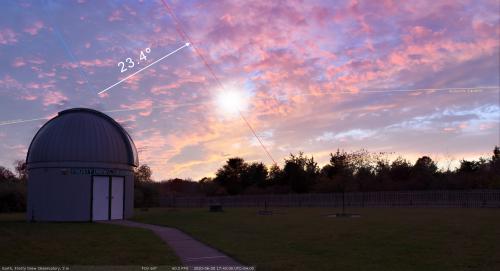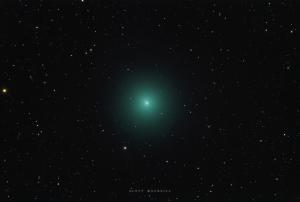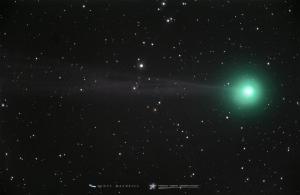Celebration of Space - June 19, 2020
This coming Saturday, June 20, 2020 at 5:43 pm ET, Earth will reach the point in its orbit where the Northern Hemisphere is at maximum tilt (23.4°) towards the Sun. This is the Summer Solstice, and marks the first day of summer in the north. On the Summer Solstice, the Sun will pass directly overhead at noon along the Tropic of Cancer, and will bring the shortest nighttime period of the year in the north. The Arctic Circle will see the Midnight Sun, and the Antarctic Circle will see Polar Night. This may be an awesome time for heat loving zealotry, but the super short nights make it a tough time for astronomy. For example, on June 20th, astronomical twilight ends at 10:33 pm and returns at 3:03 am. That leaves only 4.5 hours of dark skies. When attempting to capture 20 hours of exposure with such a short period of night, and the likelihood of New England weather attacks, it sometimes takes all summer to complete the project. Regardless, beach days, BBQ, mosquitoes, awesome sunsets, sunburn, and a utopia for the heat loving crazies is here for the next several months, Whether you hate it or love it, step out tomorrow and feel the heat of the Summer Solstice and welcome summer. Have a happy Summer Solstice from all the astro-geeks at Frosty Drew Observatory.
It appears that 2020 may be known as the year of failed comets (among other things). Over the past several months, we’ve had three comets that experienced outbursts and then either fractured or fizzled out before awesome views could be had. Now there is another comet that *may grant us amazing views. Comet C/2020 F3 NEOWISE, is a long period comet with an orbital period of 7,329 years. This is the last time any of us will see this comet. Currently, Comet F3 is in the constellation Orion, and is heading towards the Sun. Perihelion (when the comet is closest to the Sun) will happen on July 3, 2020, at a rather close 27,401,684 miles distant from the Sun. This will cause the comet’s nucleus to significantly heat up and intense out-gassing is possible. If the comet survives perihelion, it could offer us a fantastic view over the following month’s period. Closest approach to Earth happens on July 23, 2020 at a distance of 64,315,215 miles. Considering the comet is inclined 129° to the plane of the Solar System, it will pass over Earth as it leaves the inner Solar System, which sets us up for excellent views of the comet’s tail! The comet was last observed at visible magnitude 7.2, which is easily binocular visible. If everything works out we could have a fabulous comet this summer. Considering the 2020 history of comet failures, don’t get too excited just yet. Over the next few weeks we will monitor the NASA Solar and Heliospheric Observatory (SOHO) and the NASA Solar Dynamics Observatory (SDO) as Comet F3 completes perihelion and will report updates and eventually a finder chart if we think the comet will be awesome. Let’s keep our fingers crossed!
Note that Comet C/2019 U6 achieved perihelion on June 18, 2020 and is now heading away from the Sun, eventually passing Earth. We will continue monitoring this comet as well, though its angle is not optimal for tail observations, the comet’s coma (atmosphere that forms around the comet’s nucleus) could become quite naked eye visible in July.
Tomorrow night is Frosty Drew Observatory’s second Celebrate the Milky Way special event of 2020. At this time, forecasts are looking the same as they are for tonight, so we are unsure if we will open or not. Check back tomorrow afternoon for an update. We will also send out a notification to this list with information about the event, tomorrow afternoon. If the forecast clears out, we will post a link to acquire tickets on the event page listed above.
- Author:
- Scott MacNeill
- Entry Date:
- Jun 19, 2020
- Published Under:
- Scott MacNeill's Columns




